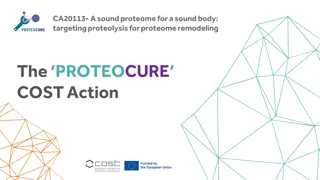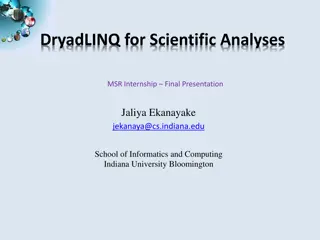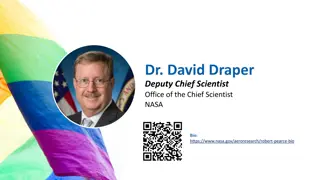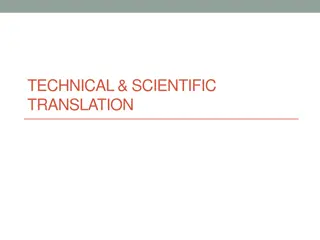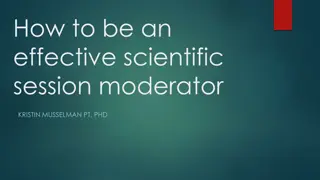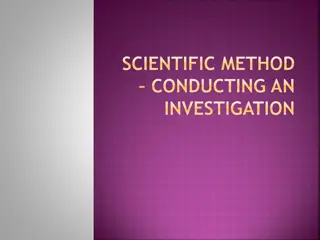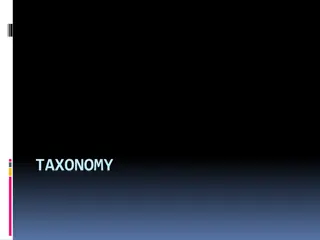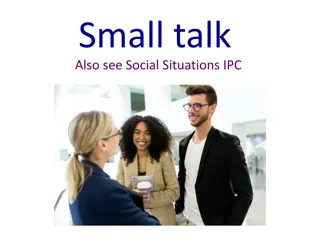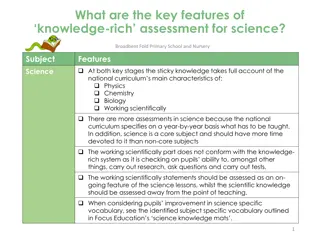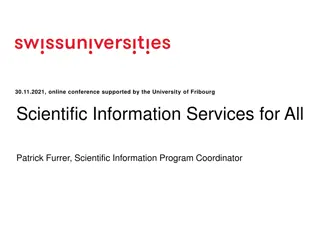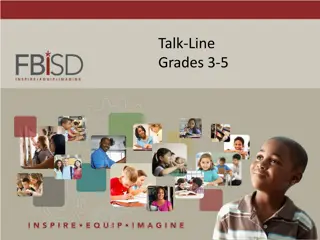Effective Scientific Talk Presentation Tips
Learn to give a scientific talk successfully by understanding your topic, audience, and goals. Gather essential materials, draft an outline, and structure your talk clearly from beginning to end. Practice speaking fluently without relying on reading or memorization to engage your audience effectively.
Download Presentation

Please find below an Image/Link to download the presentation.
The content on the website is provided AS IS for your information and personal use only. It may not be sold, licensed, or shared on other websites without obtaining consent from the author.If you encounter any issues during the download, it is possible that the publisher has removed the file from their server.
You are allowed to download the files provided on this website for personal or commercial use, subject to the condition that they are used lawfully. All files are the property of their respective owners.
The content on the website is provided AS IS for your information and personal use only. It may not be sold, licensed, or shared on other websites without obtaining consent from the author.
E N D
Presentation Transcript
How to Give a Scientific Talk Stefan K hler, Ph.D. Dept. of Psychology and Brain and Mind Institute (based on presentation prepared by Dr. Susanne Schmid in Dept. of Anatomy & Cell Biology)
How to Prepare and Present a Talk What is my topic? Be aware what to include and what not. Who is the audience? Experts, Peers, Referees, Broader Public... What do I want to achieve with my talk? Apply for position, apply for grant, teach novices, discussion with peers How long am I supposed to talk? Where will I talk? (make sure you ll have the the technical support that you need)
Gather Material Decide which materials are essential, important, supplementary, useless - rank them! Draft an outline of your talk Always keep the purpose of your talk in mind!
Beginning of Talk Introduce yourself if necessary, thank for opportunity to speak if applicable Possibly outline of your talk (NOT Introduction, Methods, Results, Conclusions!) Possibly start with something special to pull people into the topic (a citation, a problem, a news headline, a picture...)
Main Part of Talk Use clear organization for sequence of major points within and across slides At any point of the talk, you and the audience should be aware where you are in sequence Connect the different parts (think of transitions!) Follow cohesive story line and try to built up excitement Take time to walk people through Figures and Tables Slow down for important points;
End of Talk Summarize most important points you made (Results) If possible relate back to the start of your talk Formulate conclusion(s) Possibly offer outlook for future research or open questions
Speaking Do not read or recite memorized talk If talk is very short, you can rehearse the first sentences Try to talk along your slides, use hints to remind you of points you often forget Only use notes with keywords if necessary (on slides comment section or index cards) Practice aloud important for fluency and to get timing right!
How to Address Questions Specify whether people can interrupt you to ask for clarifications upfront Allow yourself to repeat or rephrase the question - can help you as well as the audience (who may have had difficulties hearing it) Allow yourself to think (in silence) before you answer Admit it when you don t know the answer to a question - you can speculate, but need to indicate clearly when you do so
Visualization What? Only include main points in writing Follow clear visual organization schema (e.g., with bullet points) Avoid clutter Provide written definition of critical terms and abbreviations when first introduced Never write whole sentences! (Exception: citations) How? Powerpoint, smartboard, black board Use pictures, movies, tape recordings, but sparingly to make critical points
Design Considerations for Slides Use big fonts (> 22 points, 24 points, 20 points, 16 points ) Don t change fonts within a presentation Use colours (wisely) Don t show anything that you don t address in speaking! Use animations wisely, don t get to fancy Test projector in advance if possible (incl. embedded media)
Stage Fright Be well prepared, be organized Practice, practice, practice (with roommates, family, friends )!! When it is your turn, walk (don t rush) to front, exhale (!), look into peoples eyes, and try to make a friendly face, before you start Phrase first sentence in your head before you start; don t begin with o.k. or hm or right
Posture and Expression Stand on both feet, arms relaxed, use hands while talking Talk slowly, clearly, and lively Try to be friendly and positive, look at people, look at all people! (Never concentrate on one individual)
Language Use simple language, short sentences, spoken language Use questions and/or humor if it suits your style Be precise in use of technical and theoretical terms; don t use them in excess
Last but not least Appreciate and try to enjoy the opportunity!



